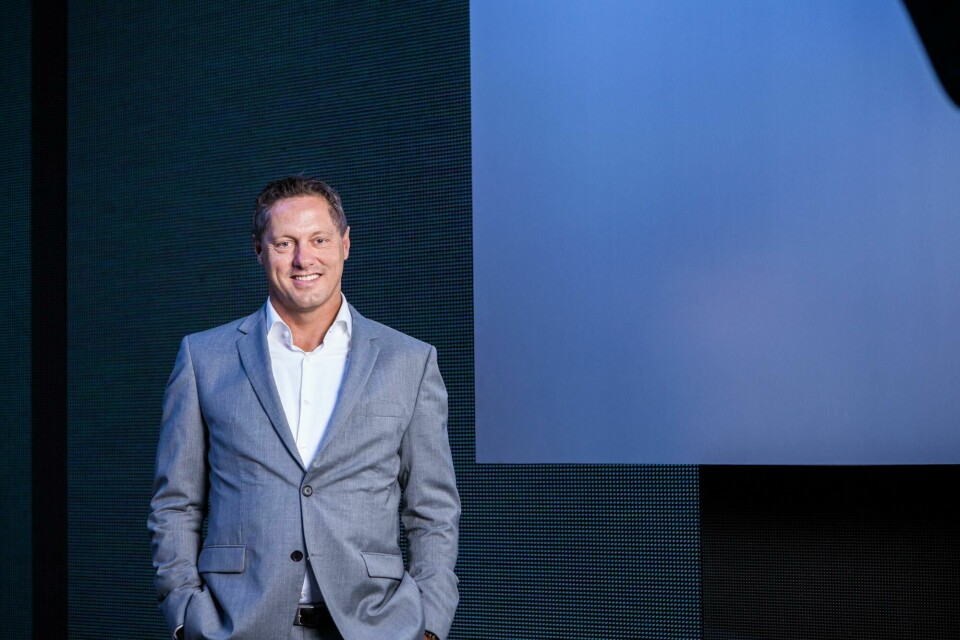
Car Design Review 4 highlights: Gorden Wagener, Daimler
We’ll be running edited highlights from our Car Design Review 4 yearbook over the next few weeks. First, an interview with one of our judges – a world-leading designer
We must keep our feet on the ground. To go further it’s a different situation from where we are now.
We had to do serious homework in order to get here. So it’s difficult on the one hand to proceed and it’s good on the other, as we are confident we have a very strong philosophy in our ‘sensual purity’ direction. Design is a big driving force behind our sales success, which is good in many ways. It’s given us trust within the company and more influence on the cars.
You know how it is in the industry. The next five years are ‘finished’, all these cars are defined, so we are thinking about the next decade, the 2020s. The ‘connected, autonomous shared, electric’ themes will change this industry. There are new players, start-ups coming, and Silicon Valley trying to do something. I think it’s the best time to be in the industry because there is so much happening. We’re literally reinventing the car. We’ve showed evidence of that with our new electric brand EQ.
Electric vehicles should look different. But when we came up with the design for the EQ it also had to be about ‘sensual purity’. It is hot and cool, like everything we do. That’s what makes the difference, what’s special about us is the execution. You basically apply the same principles, thinking and beauty, but exaggerate it. The EQ is more seamless, it has an even more full body and is very new in terms of graphics.
Successful graphics are something the normal customer sees, like the integration of the headlamps and grille, basically treating the whole front end like a black panel, like a display, with illuminated stuff underneath. So we have the signature graphic, even more sensual and pure [exterior design] language and inside, we have the digital world, with its connectivity, big screen and everything around it.
There will be a new operating system arriving in a Mercedes within two years which will be the first one we actually designed, out of our Sunnyvale studio. It’s very intuitive and easy to use with beautiful visuals. I hate the 2D stuff. I think it’s cheap. We wanted to create a very glossy three-dimensional world.
It’s such a huge workload. I have probably 100 people working globally in user interaction design now. We are building a studio department in China as well, so we can work as a global network to create these user interaction solutions.
I think the designer is the first guy who can actually do that. Simplicity is key, something that is easy to understand, maybe just two layers of control. The interior is product design, the buttons, colour and trim, how the craftsmanship is, the leather and stuff. It makes a big difference in how the ‘section’ of the display is done too. It tells you if it’s modern or if it’s old. It’s so complex.
But you know my heart is always in exterior design [chuckles]. I cannot deny that. I am always working around Robert [Lesnik] and Stefan [Kohl] and all the other guys. We do these sessions on the weekend or the evenings, where we put all cars into our big viewing hall and I work with them.
I think there is a lot of smart thinking in the Smart brand. It gives some answers to questions of inner city mobility and we are seeing everybody becoming more aware of this issue. If you see the forecast for the next decade it’s amazing how many people will be moving into mega cities, especially in Asia and there’s not really any thought about a solution.
Autonomy will be somewhere in there, we’ll have cars driving around almost like public transportation, like the Google Car on ‘virtual rails’, but of course it’s not a Smart, which is the best solution for the city. One day we will really see a big rebirth of all that thinking, due to the changing landscape. Smart is a very important cornerstone in our company strategy.
Even if we only look at CO2 regulations and what our average fuel consumption is, Smart makes a significant contribution. With all this ‘shared’ driving stuff – Uber and all these transportation efforts – there is so much potential in the Smart brand that answers all these new usage cases for cars in the city. There’s a lot we can do.
In terms of all the potential ‘disrupters’ from outside the car industry my question would be: Who needs whom and why? I can just say that we are a very innovative company that has made cars for 130 years. We are a really good player in each and every game.
We have lost a few of our designers to those new types of companies – one of our people went to Faraday for instance – but designers actually want to come to us now. They see what we are doing, the freedom we have and our power inside the company and want to be part of that story so we’ve hardly lost anybody. We get a lot of new applications. It’s almost the biggest achievement for me. Because when I took over nobody wanted to come to Mercedes or Daimler, this old traditional hierarchical company. Now it’s changed. That’s great.
Car Design Review 4 contains the best concept and production cars of the year, as chosen by the world’s leading designers, trends, student work, and much more.





